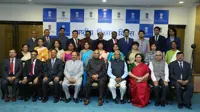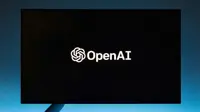Rangarajan rubbishes IMF, WB stats for India’s growth
24 Oct 2013
The Indian government has been consistent in rejecting the poor economic growth forecasts of international agencies; C Rangarajan, chairman of the Prime Minister's Economic Advisory Council (PMEAC), today rubbished the ''pessimistic'' projections of the World Bank and International Monetary Fund and said India's GDP would grow at 5.3 per cent this financial year.
"I know that several international agencies have forecast numbers that are below this number. However, I continue to maintain that it will be 5.3 per cent," Rangarajan said on the sidelines of a two-day international conference on financial inclusion and payment systems in New Delhi.
The IMF in its latest world economic outlook has estimated India's economic growth for the current financial year at 4.25 per cent at factor cost and 3.8 per cent as per market prices.
The World Bank has revised downward its GDP growth estimate for India to 4.7 per cent from 6.1 per cent projected in April.
"These institutions are unduly pessimistic. We think the growth rate will be between 5 and 5.5 per cent. We have projected growth rate of 5 per cent earlier, which I think still holds," Dr Rangarajan said.
Last month, the PMEAC had lowered the growth forecast for the current financial year to 5.3 per cent from the 6.4 per cent it had projected earlier.
Rangarajan said since the monsoon has been "extremely good'', it will result in rural demand picking up.
"As far as manufacturing is concerned, the second half (of the financial year) will show a definite improvement. We will see the impact of measures introduced in last five to six months. There will also be a strong pick-up in manufacturing in second half. Therefore we still stand by our earlier forecast," he said.
"Indications are exports are picking up in August and September. In August and September export growth rate was double digit. That will also have an impact on domestic production,'' he added.
On financial inclusion, Dr Rangarajan said the government should look at the idea of local area banks.
"While I had given the idea a few years ago, only a few such banks operate now. There is a need to relook at the idea again," he said.
"Banks are in the best position to lead financial inclusion. They have just got more teeth from the banking correspondent model and a sharper focus on self-help groups."

.webp)





























